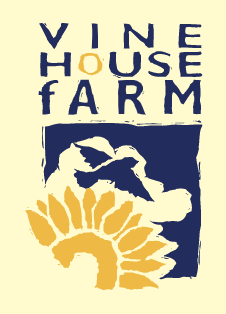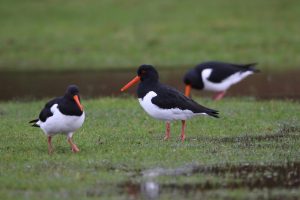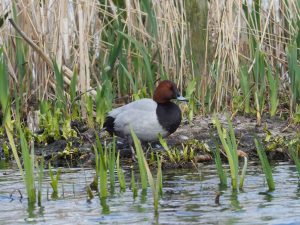
July has been cooler than average as you might have guessed, the mean temperature being 16.85°C and it has been drier than average here at Deeping St Nicholas, with just 35.8mm or 1.4 ins of rain.

We started combining wheat on the 31st July. In 1976, the great drought year, we finished combining on 31st July and in 1978 we had only one field of wheat combined on the 1st September, that summer was wet and cold.
We have a new combine which we paid for in January. In March, we were told that the New Holland factory was shut down because of Covid 19 and the combine we asked for was not available but there was a bigger one available, which we could have at the same price. In June, we were told that the combine that was promised to us had been delivered to someone in Germany. There was another one available, one size bigger than we had ordered, on tracks and with £20,000 more extras already fitted which we could have for £4,000 more than we had paid for the original one. A real bargain, so we accepted the offer.
So, we now have a combine that will harvest about three acres an hour more than the one we originally ordered. It has an auto-pilot, so you drive it into the crop and it sets its own speed which is the maximum speed that it can thrash the crop, with only minimal losses. No field we go in is ever a constant crop, so the combine is constantly altering its speed to keep itself at maximum capacity. It also steers itself down the field. What will they think of next!
It is very pleasing to have a combine bigger than you need. I remember one year in the middle of harvest about 25 years ago, we had 10 days of wind and rain preventing us from harvesting. When we started again, I calculated that the wind and rain had cost us about £40/acre in shed wheat, we had 150 acres to harvest, so £6,000 lost. One of my neighbours still had 750 acres to harvest. Once the crop is ripe, it needs to be harvested as soon as possible.
The next two weeks according to the forecast is going to be dry and sunny for us here in South Lincolnshire. That will be a real bonus for us, as we will be able to get most of the wheat and barley harvested without having to dry it. Dry weather will be just what the sunflowers, canary seed and the millet need. Every crop needs sunshine when it is in flower, it is that sunshine that produces a good crop.
However, the potatoes and the sugar beet need some rain, but on balance I would still prefer the dry weather for the next two weeks. We can irrigate the potatoes and it pays to irrigate them. Sugar beet is a crop that is only just worth growing as we only get paid £20 per tonne, 20 years ago we were getting paid £36 per tonne. Great strides have been made with sugar beet in the last 30 years as different varieties and growing techniques have increased yields by 50%. Even so, it doesn’t make a good crop but it helps to make a good rotation against blackgrass – which is rather like Coronavirus as I can never see blackgrass going away.
We are continuing with sowing catch crops, all the oil seed rape land has been sown with oil radish and phacelia. This crop is a soil conditioner, with a good tap root to aid drainage, it captures the nitrogen in the soil so heavy rain will not leech it away and if the field is on a slope it will stop the soil being washed off the field into our rivers. We don’t harvest the crop, the crop will be absorbed back into the soil.


It is a very poor summer for Barn Owls. I have 20 nest boxes that I have put up where Barn Owls usually nest but I have only ringed 10 Owlets. Barn Owls feed almost exclusively on voles and there is a shortage of voles. 2019 started poorly for Barn Owls but as the summer progressed, the number of voles increased. Several Barn Owls had second broods, of which three or four fledged which is unusual despite a wet October. These young Owls stayed around through the winter and ate all the voles up.
The wet weather and strong winds in February was very cruel for the Owls and many starved to death as they cannot hunt successfully as a lot of their hunting is done by sound. The wet weather also delayed any voles breeding until March. April and May were good for the voles, but their numbers have not increased. The Owls have been busy hunting all through the night and some of the day as well. This has kept vole numbers down so much, that at least 50% of the pairs of Owls have not bred and those that have bred are only rearing one or two chicks.
This has all happened before – 2014 was the best year for voles and Owls and our 20 nest boxes produced about 130 Owlets. Again, the young Owls stayed around and then ate up all the voles, so in 2015 no Barn Owls bred at all in Deeping Fen. We can obviously see from this that food is their driver, lots of voles means lots of Owls and it is the same for other birds as well. So, if a species is declining, it is usually running out of food at some time in the year and often due to a shortage of insects.
By the time you receive this newsletter birds that rely on insects will have finished breeding, with the exclusion of Swallows and House Martins. This is due to crawling insects being naturally in sharp decline after the end of July. These crawling insects have turned into flying insects, which is the life stage that the Swallows and House Martins feed on. This life stage is very important, as they are the ones that lay the eggs for the next generation.
Linnets, Goldfinches and Greenfinches will still be breeding. I found a Linnet’s nest on 1st August, with four eggs, their young will be fed on unripe seeds. The first brood of Swallows do not fledge until the end of June – this is a month later than the first brood of Whitethroats and Blackcaps fledge. Swallows and House Martins are able to feed nestlings here in the east until early September. In the west country, in dairying areas, they can be feeding young right up to the end of September as there are plenty of flies around the cattle. Our Swallows leave here in the first two weeks of September now due to insects declining, 40 years ago I could see Swallows or House Martins every day until the middle of October.
I have had a few people ring up saying ‘why don’t you talk about rats – we have rats, we do not want to stop feeding the birds, what should we do?’. I haven’t talked about rats before, as it is not a very nice subject.
If I had rats at my feeding area near my house, I would take all the food in at night, as rats prefer to feed at night. I would put some poison down under a vegetable tray with thick polythene over the top, so that the polythene touches the ground on all sides. Rats like going under this type of tray as, whichever way danger comes, they can escape out the other side; birds will not go under the polythene. You can use a black box to put poison in, but rats don’t like going in them as there is usually only one way out. Probably the best place to buy some poison is at your local country store and after you have put it down, don’t expect the rats to go for it straight away as they are neophobic, they won’t start eating it for four or five days.
You could also try trapping them in a live trap, where the first one may be trapped fairly easily, but as they are intelligent animals, catching the second or third one may be a lot more difficult.
It is that time of year again where the sunflowers are out in bloom & looking amazing. Unfortunately, the sunflower fields aren’t accessible by a public road where they are growing this year, so we are unable to allow visitors. We’ve also had to cancel our farm walks this year due to the virus. Please keep an eye on our facebook page and website for information about walks next year.



